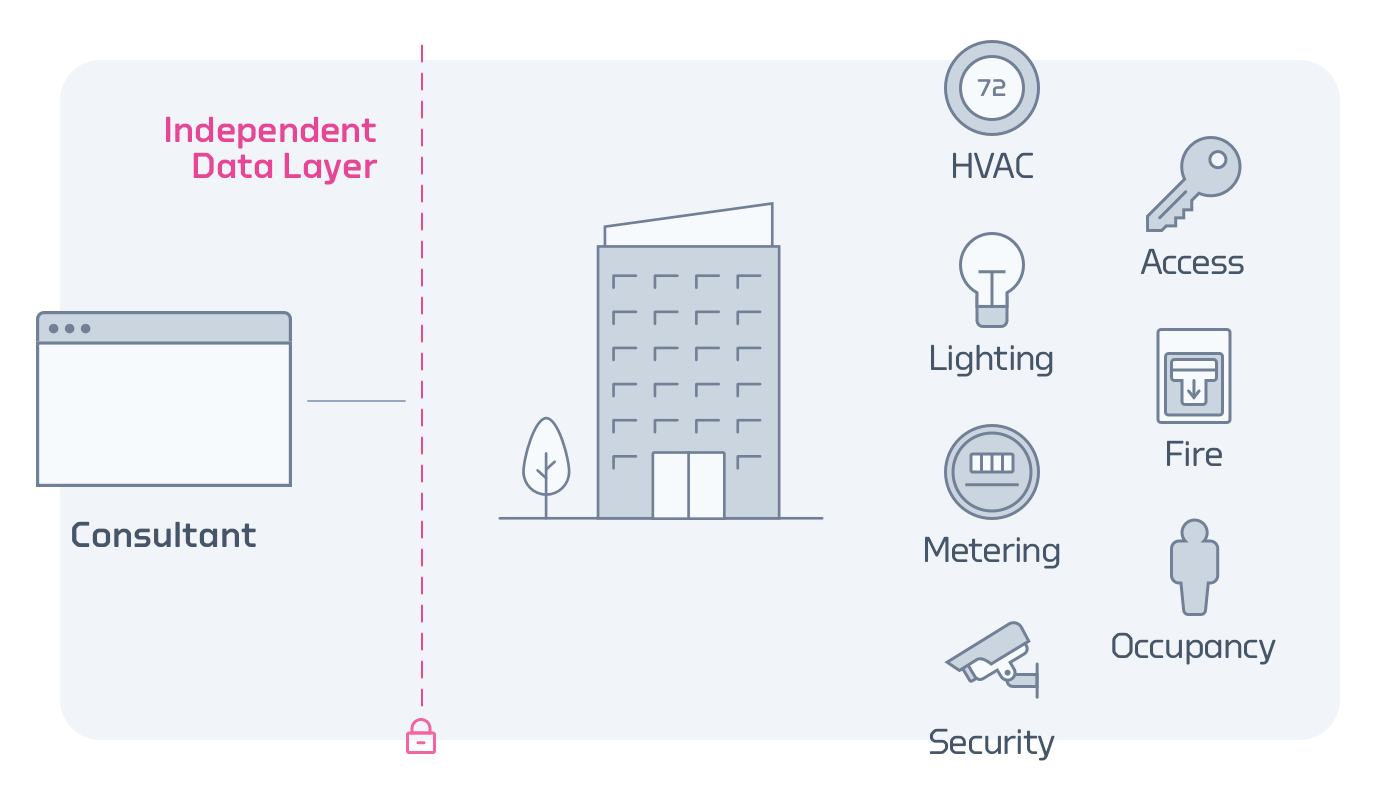
Continuing our IDL series: What is an Independent Data Layer, and How Does an IDL Help Building Owners? — next let's see how an IDL helps outside consultants.
As a consultant, data is likely early on your radar. How will you get access to building systems? How will you discover what's installed? How will you poll the points? Where will you store trend data? How will you integrate that data into your tools?
Kicking off that effort involves (often protracted) conversations with both IT and the controls contractor to gain some level of access. And usually, you're the one left accomodating the proposed solution. This uncertainty leaves you juggling a patchwork of nonspecific tools, so you're ready for whatever they throw at you.
While an IDL won't eliminate these repetitive conversations, it can dramatically streamline how vendors and consultants get onboarded to building systems.
Much of the current complexity around data access results from non-uniform standards and inadequate underlying technology. Today's BAS solutions were designed to manage your building controls. They were not designed for a distributed, secure cloud data access architecture.
In contrast, the IDL was intentionally engineered to solve this exact problem. Inside the building, it understands control protocols, like BACnet and Modbus. It knows how to efficiently connect to these systems, which operate very differently than traditional IT products. Outside the building, it uses modern and well-accepted (and understood) technologies, like TLS, REST APIs, and JSON encoding.
This abstraction layer substantially simplifies how modern web applications communicate to your "niche" building systems. Bringing control data up to JSON alone can solve a massive amount of the complexity involved in data access.
With the IDL, getting data becomes as simple as making a web request. No more juggling which vendor or protocol you can support. Just a simple normalized data flow. Often you are up and running in hours – not weeks or months.
But you don’t need the IDL to exist already. Anyone can advocate for an IDL, and it can be of any scope. Propose that an IDL gets installed to simplify data acquisition just for the points you're interested in. Even if just for the term of your project, there is no requirement that an IDL is permanent. Many IDL solutions will easily scale up to fit your needs as projects grow.
Reap the IDL's benefits to save substantial time and money, and let your IDL vendor manage the hassle of data access. Focus on what you do best — and what your customers are paying you for — not all the plumbing.